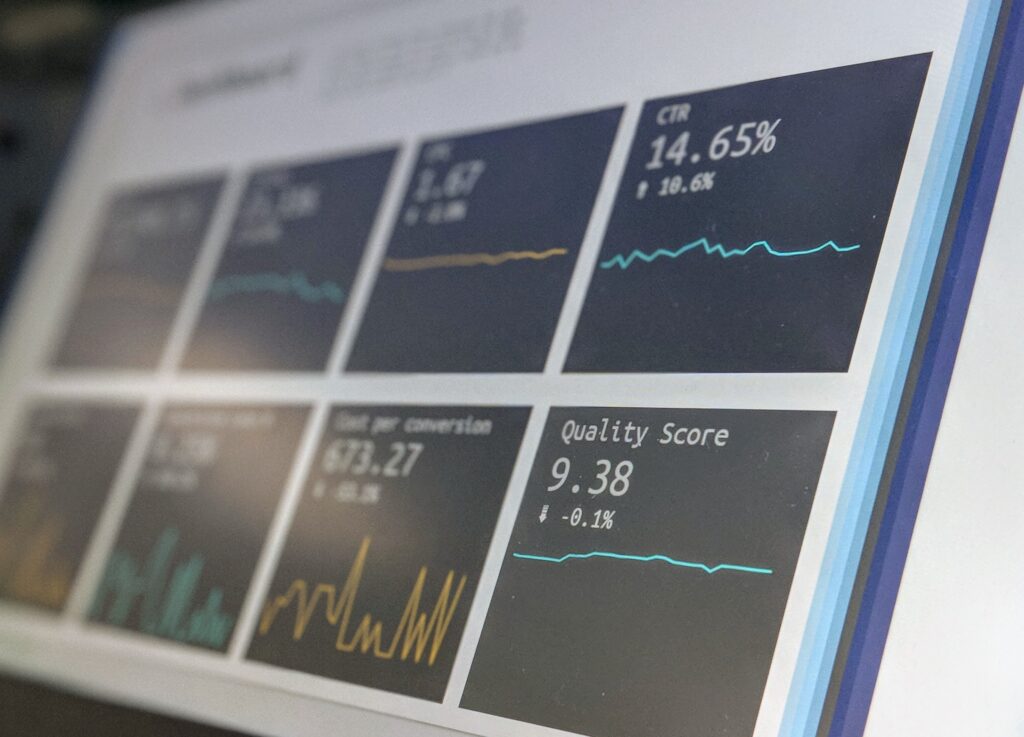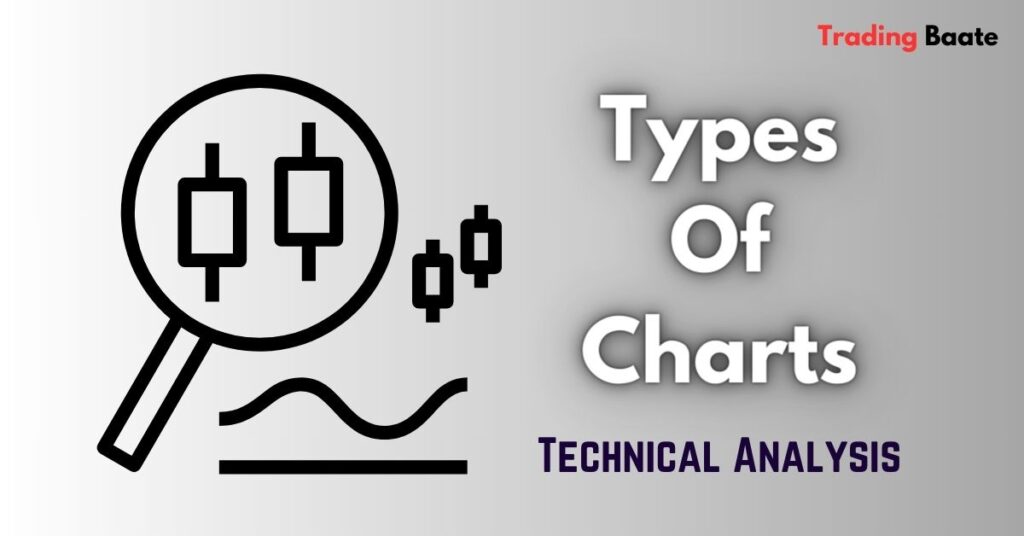In technical analysis, the chart is the only thing that comes into action, and charts indicate everything about the stock. Technical analysts analyze the past price movement on the chart and predict the future forecast of the price of a particular stock. In this article, we learn why charts are used in technical analysis, how charts are used in technical analysis, why we should know how to read charts, and the key components of the charts.
What is a Chart?
A chart is a graphical visualization of statistics or information that helps make complex information easier to understand, more approachable, and more visually attractive. Charts communicate facts, patterns, and trends in many disciplines, including finance, science, business, and education. They occur in different forms that are appropriate for particular types of data and goals.
Why do we use Charts in Technical Analysis?
We use charts in technical analysis because charts visually represent changes in share price and trading volume, making it easier to understand, interpret, and communicate.
Reasons to use charts in Technical Analysis
Many tools/indicators are used in technical analysis, but all the indicators are applied on charts. Therefore, the chart is the key tool for technical analysis, and the following are the reasons:
Visual Clarity
Charts provide a clear visual representation of complex data of price and volume. Charts allow us to identify different chart patterns, which helps us in decision-making.
Time Series Analysis
Charts help us to visualize how the price has changed over time, allowing for trend analysis and forecasting.
Decision Making
The chart helps us make an informed decision by providing a visual context for data on whether to buy or sell that security.
Forecasting and Prediction
The chart helps in forecasting and prediction future trends and outcomes based on historical data.
There are multiple time frames used by traders based on their trading style. They use multiple time frame charts to understand better future price movement, including intraday (e.g., 1-minute, 15-minute), daily, weekly, and monthly timeframes.
Risk Management
Charts help assess risk by visualizing potential risks, setting stop loss, and booking profit. Traders often overlay technical indicators onto price charts for more confirmed decision-making.
Entry and Exit
The chart helps determine the exact entry and exit point/level in the particular market.
Long Term Investing
In long-term investing, the overall trend can be identified in a higher timeframe before making a long-term investing decision.
Charts in financial markets serve as a visual representation of historical and real-time price and volume data. Traders and investors use charts to analyze market behavior, identify trends and patterns, set trading strategies, and manage risk.
How Do Charts Work in Technical Analysis?
Chart works in technical analysis by tracking and visualizing the price movements of various assets, including stocks. They provide a historical perspective on an asset’s price performance, helping traders assess its growth or decline over a specific period.
By observing current price trends and immersing or completed chat patterns on charts, traders can make more informed decisions about buying or selling that particular asset, managing risk, and developing trading strategies accordingly.
What is a Stock Chart?
The stock chart is a visual representation of past price movement of stock, which includes high, low, current price, volume, etc.
The Y-axis represents price, and the X-axis represents the timeframe from minutes to hours to days to weeks to months and years.
Understanding a stock chart is fundamental to stock trading and investing. Technical analysts use stock charts to analyze how that particular stock’s price has changed over time. They identify trends, support resistance, volume spikes, breakouts, and reversals in stock before making any trading or investing decision in that particular stock.
Technical Analyst also analyzes the chart in different timeframes, starting from higher timeframe to lower timeframe depending on their trading style, whether they are Day Trader, Swing Trader, or Investor, to identify the stock’s future potential.
Why should we know how to read Stock Charts?
We need to read stock charts because chart reading is the first step of technical analysis to start trading or investing in the stock market; without knowing how to read a chart is like Navigating without a Compass.
If you are trading and investing in the stock market, chart reading will help you in the following ways:
Historical Analysis
Charts allow the analyzer to see a particular stock’s past price movement, and it is believed that “History repeats Itself.”
Market Sentiment
Candlestick charts provide insights into market sentiments. Different bullish and bearish candlestick patterns indicate the prevailing sentiment.
Pattern Recognition
Various patterns, including head and shoulders, double tops, and flags, can be seen on stock charts, which can help to predict future market fluctuations and trade opportunities by recognizing these patterns.
Technical Indicators
Technical indicators like moving averages, the Relative Strength Index (RSI), and MACD are frequently seen on stock charts and provide additional information on momentum, volatility, and probable price reversals of the particular stock.
Competitive Advantage
You have an advantage over traders and investors who rely on intuition or insufficient information if you know how to read stock charts.
Risk Management
Understanding stock charts is essential for risk management. You can set stop-loss orders, which are predefined exit points based on technical analysis, to limit potential losses.
Decision Making
Stock charts give us important details about a stock’s historical price fluctuations, enabling us to make the right decision. We may evaluate trends, prospective reversals, and the past performance of a stock by evaluating charts, which helps you decide whether to purchase or sell a stock.
Timing
Timing is critical in trading and investing. Stock charts help you identify optimal entry and exit points. By recognizing patterns and trend changes, we can improve the timing of our trades, maximizing profits and minimizing losses.
Here, everybody involved in trading or investing can benefit from learning how to read stock charts. It offers the knowledge and skills required to manage risk, make wise decisions, and move through the complex and frequently unpredictable world of financial markets.
Key Components of a Stock Chart
Stock Charts provide valuable insights to traders and investors by visualizing historical data.
Key components of a stock chart include:
Price Axis
The vertical axis (usually on the right side) represents the stock’s price.
Time Axis
The horizontal axis (usually at the bottom) represents the time period under consideration. Depending on the chart’s granularity, it can be broken down into various timeframes, such as minutes, hours, days, weeks, or months.
Price Data Points
The chart plots these to represent the stock’s opening, closing, high, and low prices for each selected timeframe.
Volume Bars
Many stock charts include a volume bar chart or histogram beneath the price chart. This shows the trading volume (the number of shares or contracts traded) for that specific period.
We just discussed important chart components in technical analysis, and many more are still waiting. If you want to learn more about technical analysis, stay connected with “Trading Baate.”
Last Words
We just learned about charts in technical analysis briefly. We discuss the importance of charts in technical analysis, the significance of chart reading skills, and highlight the key components of charts used in technical analysis. Charts are the key tool to start the journey of trading and investing in the stock market.
Disclaimer
This article is for educational purposes only.
The information provided here is from the Author’s knowledge, learning, and expertise.



